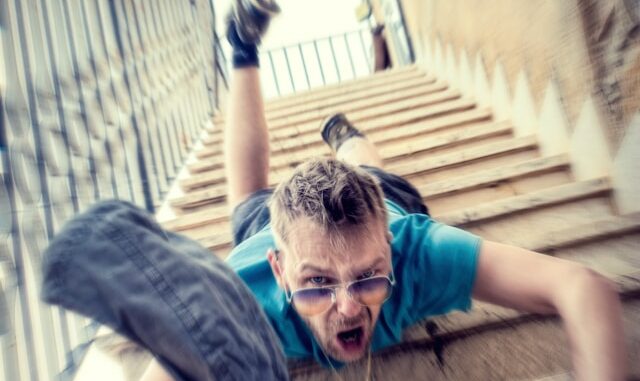
Preventing slip and fall accidents is a shared responsibility between property owners, occupiers, and visitors. Here are some tips for property owners and occupiers to minimize the risk of accidents on their premises:
- Regular Inspections: Conduct regular inspections of the property to identify and address potential hazards, such as uneven surfaces, slippery floors, and inadequate lighting. Implement a systematic inspection schedule and document any maintenance or repairs performed.
- Maintenance and Repairs: Promptly repair any hazards or defects on the property, such as cracked sidewalks, loose handrails, or uneven flooring. Regular maintenance and timely repairs help prevent accidents and demonstrate a commitment to safety.
- Slip-Resistant Surfaces: Use slip-resistant materials and treatments on floors, walkways, and stairs to improve traction and reduce the risk of slips and falls. Consider installing slip-resistant mats, applying non-slip coatings, or using textured surfaces in areas prone to wet or slippery conditions.
- Proper Lighting: Ensure that all areas of the property are well-lit, both indoors and outdoors. Adequate lighting helps visitors see potential hazards and navigate their surroundings safely, especially in dimly lit areas such as stairwells, hallways, and parking lots.
- Clear Signage: Place clear and visible signage to alert visitors to potential hazards, such as wet floors, uneven surfaces, or steps. Use warning signs, caution tape, or barricades to indicate areas under repair or maintenance and redirect traffic away from dangerous areas.
- Snow and Ice Removal: In cold climates, implement a snow and ice removal plan to keep sidewalks, parking lots, and entryways clear and safe for pedestrians. Use salt, sand, or de-icing agents to prevent ice buildup and provide traction on slippery surfaces.
- Accessibility Considerations: Ensure that the property is accessible to individuals with disabilities by installing ramps, handrails, and accessible pathways as required by accessibility laws and regulations. Consider the needs of all visitors, including those with mobility impairments or other disabilities.
- Employee Training: Train staff members on safety protocols, hazard identification, and emergency procedures to prevent accidents and respond effectively to incidents. Provide ongoing training and reinforcement to ensure that employees are aware of their responsibilities and empowered to maintain a safe environment.
- Community Engagement: Engage with the local community, tenants, and visitors to raise awareness about safety hazards and encourage proactive reporting of any issues or concerns. Foster a culture of safety and collaboration to create a shared responsibility for maintaining a safe environment.
- Continuous Improvement: Regularly review and update safety policies, procedures, and practices based on feedback, incident reports, and changing conditions. Continuously strive to improve safety standards and mitigate risks to prevent future accidents and injuries.
By implementing these proactive measures, property owners and occupiers can reduce the risk of slip and fall accidents and create safer environments for visitors, tenants, and employees. Prioritizing safety, regular maintenance, and ongoing vigilance are essential for preventing accidents and promoting a culture of safety on their premises.
